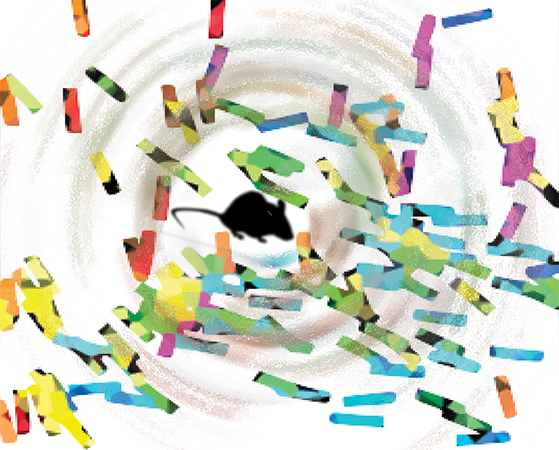Kyoto, Japan — What we see in front of us is what our brains tell us it sees. Our eyes capture visual stimuli which are converted into an image, to which the brain responds by organizing neurons into clusters. These clusters are found in many brain regions, for example, the visual cortex and the superior colliculus.
A new study by Kyoto University researchers, appearing in the Journal of Neuroscience, shows that clusters in the superior colliculus dynamically change depending on whether a mouse is awake or anesthetized. These findings suggest that the brain may optimize visual information processing depending on its conscious state.
The superior colliculus, which is older in terms of evolution, is typically less studied and considered less vital for visual perception even though it is responsible for saccades, rapid eye movement between two fixed points, as well as facial recognition.
Visual information is represented as a map-like spatial response pattern for efficient information processing. These patterns respond to the direction and orientation of the visual image. However, the properties of these spatial pattern maps are not well understood, as different research groups have come to differing conclusions.
“We revealed that these map- or cluster-like representations of moving directions were enhanced in isoflurane anesthesia,” says Masatoshi Kasai, one of the authors of the study.
Suspecting that different brain states were the reason, Kasai and co-author Tadashi Isa, of KyotoU’s WPI-ASHBi, used two-photon microscope calcium imaging to model the different states in mouse brains while they were awake or sedated.
Compared to the awake state, more neurons responded to specific orientations under anesthesia, demonstrating an unexpected dynamic of the mapping that allows the superior colliculus to adapt.
Kasai notes, “Usually, functional maps in the cortex are stable once they are formed.”
He adds that his results, however, suggest the clustering of neurons in the superior colliculus changes in response to the condition of the brain to process visual information efficiently.”
The anesthetic isoflurane was chosen as it suppresses the GABAergic inhibitor neurons, whereas other types do not. The isoflurane-influenced dynamics in the pattern mapping, unseen with other anesthetics, also suggest that “the superior colliculus is more involved in vision information processing than previously thought,” says Kasai.








